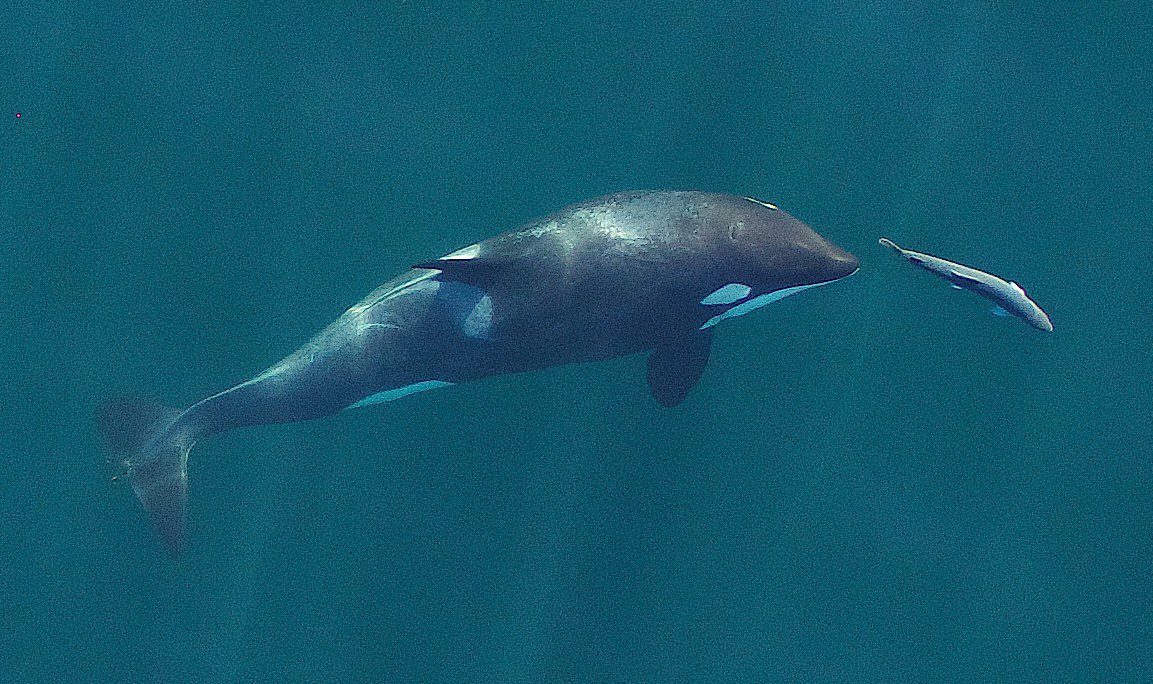In the massive, open waters off California’s coast, a newly identified group of transient killer whales (Orcinus orca) uses specialized hunting methods to catch marine mammals. Now, a study published in PLOS ONE examines orcas in the Monterey Submarine Canyon — one of the West Coast’s deepest canyons — offering insights into their unique hunting strategies.
Orcas around the world exhibit distinct populations or ‘ecotypes,’ each with unique social structures, dietary preferences, and hunting techniques. Among these, the transient killer whales are adept at preying on marine mammals. These orcas are called ‘transient’ because they are more elusive, taking unpredictable travel routes like sea nomads, as opposed to their ‘resident’ counterparts.
This particular ecotype can be categorized further into two distinct groups: the inner coast orcas, which hunt in shallow coastal areas, and the outer coast orcas, known for their deep-water foraging activities. However, the behaviors and habits of the outer coast orcas remain less understood because finding killer whales in the open sea is very challenging work for marine biologists.
“Different killer whale populations around the world forage using different behaviors that are specifically adapted to hunting prey in different habitats,” the University of British Columbia’s Joshua McInnes, the study’s first author, told ZME Science.
To shed light on this, McInnes and his fellow researchers analyzed data from marine mammal surveys carried out from 2006 to 2018, alongside observations from whale-watching eco-tours between 2014 and 2021. They focused on the foraging patterns of outer coast transient killer whales in and around California’s Monterey Submarine Canyon, known for its steep contours.
The Monterey Submarine Canyon provides a unique backdrop for these orcas to employ their specialized hunting methods. In contrast to their peers who hunt in shallower coastal waters, these orcas strategically use the deep canyon’s topography to corral and capture marine mammals such as California sea lions, grey whale calves, and northern elephant seals.
“In our study, transient killer whales appear to use the deep Monterey Submarine Canyon system to hunt marine mammals, while in Norway and Iceland, killer whales’ populations appear to use specialized behaviors to corral Atlantic Herring in shallow coastal waters,” McInnes said.
“Furthermore, mammal-eating killer whales in the Crozet Islands and along the exposed coasts of Patagonia use intentional stranding to grab southern elephant seals and southern sea lions off the beach.”
In another study published in the journal Aquatic Mammals, also out this week, McInnes and colleagues go into more detail about a unique orca population in the open ocean off California and Orego. They found some of the orcas had cookie-cutter shark bite scars. These are parasitic sharks that live in the open ocean, which means the orcas themselves also roam very far from the coast. In one of the monitored encounters, the orcas were seen attacking a herd of nine adult female sperm whales. In other instances, they were seen preying on sea turtles.
What’s intriguing is that this sub-population has some distinct physical characteristics. McInnes explained that although the sizes and shapes of the dorsal fins and the saddle patches on these whales are generally similar to those seen in transient and offshore types of killer whales, there’s noticeable variety in their fin shapes. Some whales have fins that are pointed, resembling those of transient killer whales, while others have more rounded fins, like those found on offshore killer whales. Additionally, the patterns of their saddle patches—the distinctive gray markings near their dorsal fins—also show diversity. Some whales display large, evenly colored gray saddle patches, while others have sleek, narrow saddle patches, which are more typical of killer whales living in tropical areas.
The unique hunting techniques seen off of California are thought to be passed down culturally among the orcas, emphasizing the role of social learning in their successful hunting practices. Despite extensive observations, the exact method by which transient killer whales utilize the contours of the Monterey Submarine Canyon for hunting remains murky.
“It is still unclear how transient killer whales are able to use the contours of the Monterey Submarine Canyon to hunt,” McInnes said. “This behavior has been observed for several decades in this study area and in adjacent canyon systems along the coast. Our study is the first to quantify habitat use patterns of transient killer whales in Monterey Bay using a geospatial analysis.”
Thanks for your feedback!

